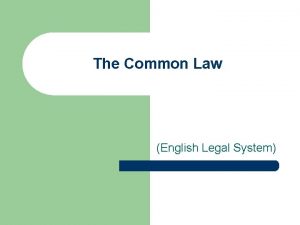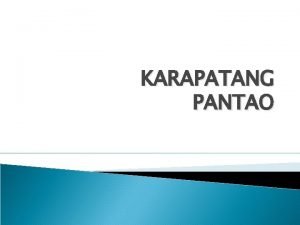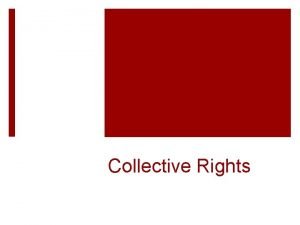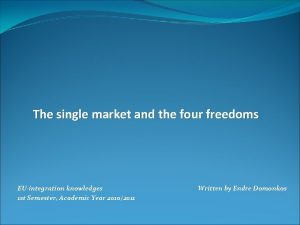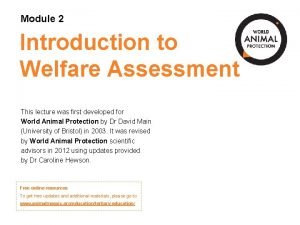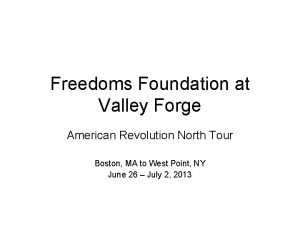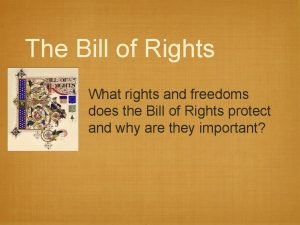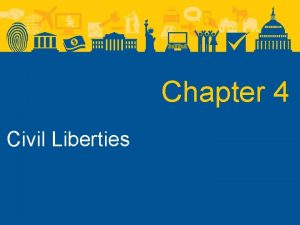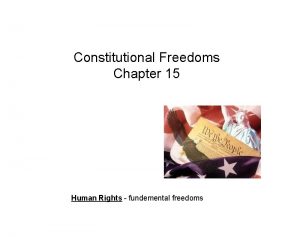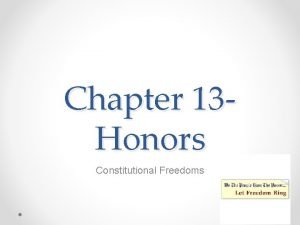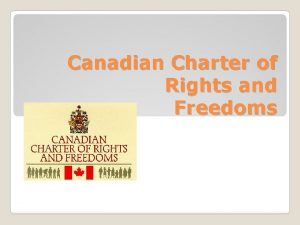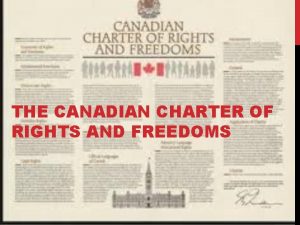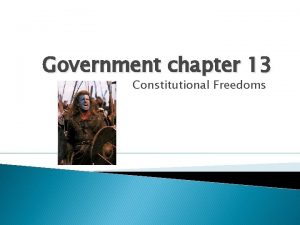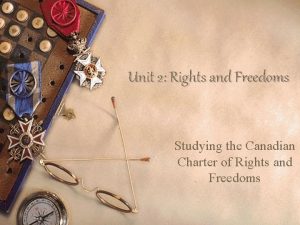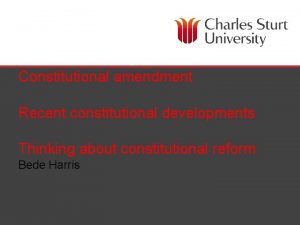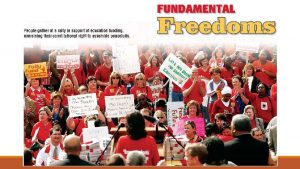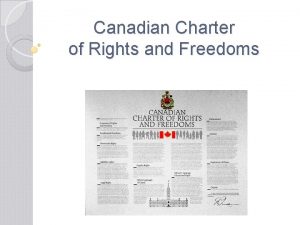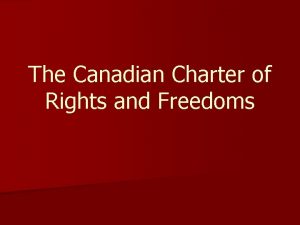Unit 2 Rights Freedoms Lesson 1 Canadian Constitutional















- Slides: 15

Unit #2: Rights & Freedoms Lesson #1 Canadian Constitutional Law

Unit #2: Main Concepts By the end of this unit we will be able to: • Describe the historical development of human rights legislation in Canada; • Explain the development of Constitutional Law in Canada; • Explain the rights and responsibilities of individuals under the Canadian Charter of Rights & Freedoms; • Explain the roles of the legislature and the judiciary in defining, interpreting, and enforcing Charter rights in Canada; • Analyse the conflicts between minority and majority rights responsibilities in a democratic society, and examine the methods available to resolve these conflicts.

Learning Goals • We are learning to distinguish the law-making powers and authority of the federal, provincial and municipal governments • We will learn what Canada’s constitution is, and why it is necessary.

Success Criteria • Identify the main sources of our constitution • Define the terms intra and ultra vires with respect to powers granted to each level of government. Niqab ban for public servants would be considered: Stephen Harper • https: //ca. news. yahoo. com/niqab-ban-public-servantsconsidered-stephen-harper-215808560. html

Canadian Constitutional Law • Often said to be the most important law of any country • Provides the fundamental framework on which all other laws are based • Power Map (Highest Law of the Land) • Provides the framework for a nations form of government and its legal system • Sets the procedures for making laws and defines who will be involved in making them

To Be or Not To Be (Written) • Can be unwritten and instead be comprised of a number of statutes, customs and conventions. • Prior to 1982, Canada’s Constitution took this form • U. S. A’s Constitution is written • Britain’s Constitution is largely unwritten • Canada’s Constitution is both written and unwritten

To Be or Not To Be (Written) Examples of Unwritten: • No mention of Prime Minister, Cabinet (ministires), and party system (all adopted from Britain) plus conventions of political conduct. Examples of Written: • The Constitution Act 1982, The Charter

Sources of Canada’s Constitution 3 Main Sources of Canada’s Constitution: • The written Constitution • Canada’s Unwritten Constitution • Court Decisions

The Written Constitution The Constitution Act, 1867 (originally called the British North America Act) • British legislation covering British Colonies drawn up by Canadian Fathers of Confederation Ontario/Quebec/New Brunswick/Nova Scotia • Changes to the BNA Act had to be passed in British Parliament until the Act was patriated in 1982 • Patriated means “brought home to Canada” https: //www. youtube. com/watch? v=Y 5 g 8 f. UOg. Xx. A • Renamed The Constitution Act, 1867

The Written Constitution Renamed in 1982: Constitution Act, 1982 • Amendments & additions to the Act in 1982 Canadian Charter of Rights & Freedoms / An Amending Formula Fathers of Confederation adopted a Federal Structure of Government due to heavy French and British occupation Power Divided: Central Federal Government / Regional Provincial

The Unwritten Constitution • The Canadain Constitution: no mention of a Prime Minister or Cabinet HOWEVER…. • The Act contained a phrase that “Canada would be united with a constitution similar in principle to that of the United Kingdom” Party System / Cabinet / Parliamentary Democracy

Court Decisions • Used to resolve disputes over the meaning or the intent of certain sections, phrases, and even individual words in the Constitution.

Division of Powers • sections 91, 92, 93 of the act dictate the subject matter that federal and provincial governments may legislate • Section 91 Federal powers: criminal law, regulation of trade and commerce, armed forces and defence, currency and coinage, aboriginal peoples and land, immigration, marriage and divorce…. PLUS RESIDUAL POWERS • Section 92 Provincial powers: hospitals, property and civil rights, marriage ceremonies, administration of justice • (see text page 106)

Legal Status of Municipalities - Canadian cities & rural municipalities have no constitutional rights of their own - The Const. Act, 1867 made municipalities the responsibility of provincial governments - Provincial municipal acts give towns and cities authority to provide services and pay for them by levying property taxes & service charges - They can pass by-laws (e. g. poop and scoop) - In recent years large cities like Toronto have been pushing for more power and stronger ties to other cities & levels of government

Judicial Involvement • ultra vires: outside the power of the legislature and therefore will be ruled by the courts to have no effect • intra vires: constitutionally valid laws within the power of the legislature • causes many issues between governments when the distribution of power is unclear Independent Study • 1. Read textbook pp. 102 - 112 • 2. Answer questions #2, 3 on page 105 • 3. For the Ward v. Canada on pp. 108 – 109, answer questions #1, 2
 Examples of common law
Examples of common law Mga likas na karapatan
Mga likas na karapatan What laws recognize the collective rights of the metis
What laws recognize the collective rights of the metis Four freedoms of the eu
Four freedoms of the eu Four freedoms of the eu
Four freedoms of the eu Welfare inputs and outputs
Welfare inputs and outputs Freedoms foundation teacher programs
Freedoms foundation teacher programs Freedoms
Freedoms Freedoms
Freedoms Chapter 19 civil liberties first amendment freedoms
Chapter 19 civil liberties first amendment freedoms Chapter 19 civil liberties first amendment freedoms
Chapter 19 civil liberties first amendment freedoms Lesson 1 - the constitutional convention
Lesson 1 - the constitutional convention Positive vs negative rights
Positive vs negative rights Difference between littoral and riparian rights
Difference between littoral and riparian rights Duties towards self
Duties towards self Legal rights vs moral rights
Legal rights vs moral rights
